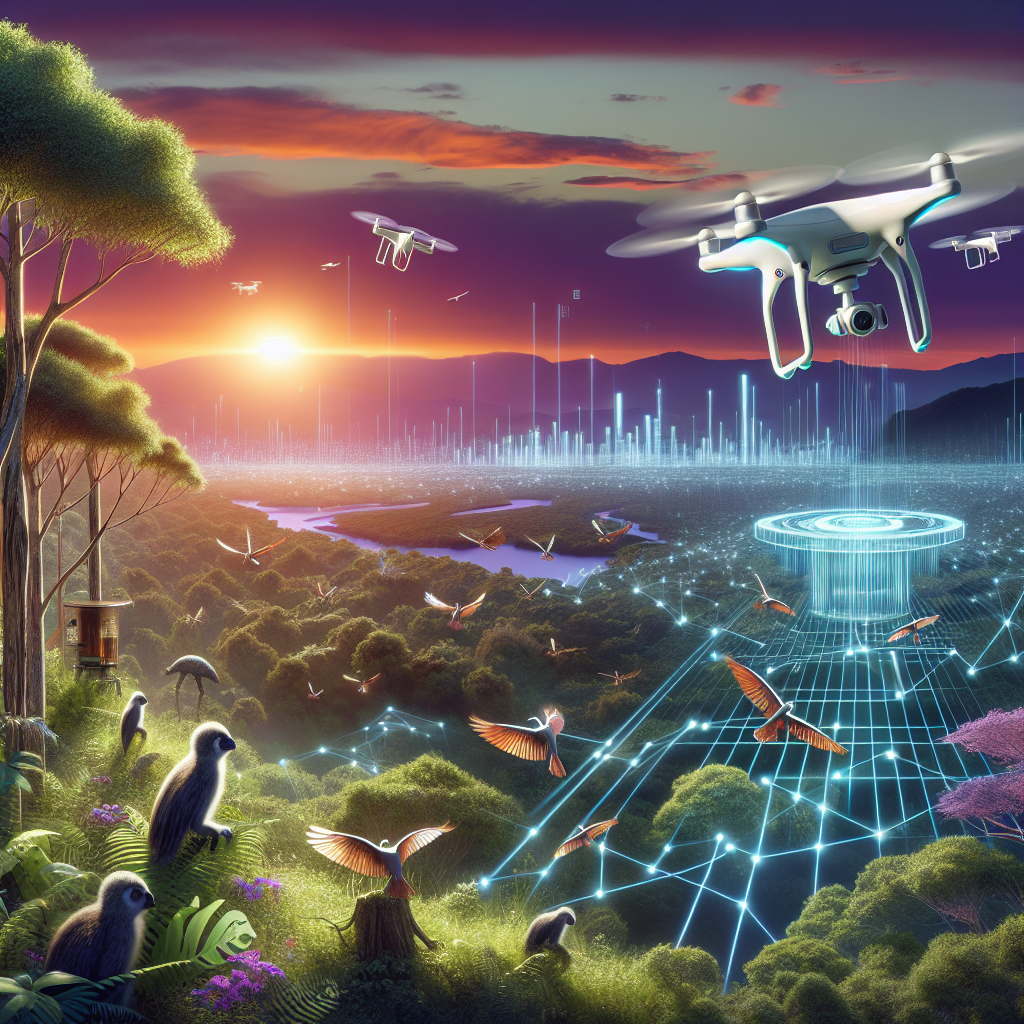Ethical AI in Biodiversity Conservation: Enhancing Sustainability and Resilience
With the increasing threat of climate change and habitat destruction, biodiversity conservation has become more important than ever before. The use of Artificial Intelligence (AI) in biodiversity conservation has the potential to revolutionize the way we protect and preserve our natural world. However, as with any technology, there are ethical considerations that must be taken into account when using AI in conservation efforts.
Ethical AI in biodiversity conservation refers to the responsible and transparent use of AI technologies to support and enhance conservation efforts while minimizing negative impacts on both the environment and society. By incorporating ethical principles into the design and implementation of AI systems, we can ensure that these technologies are used in a way that is fair, unbiased, and respectful of the rights of all stakeholders, including both human and non-human species.
One of the key benefits of using AI in biodiversity conservation is its ability to analyze vast amounts of data quickly and accurately. This can help conservationists to identify patterns and trends that would be difficult or impossible to detect using traditional methods. For example, AI can be used to analyze satellite imagery to track changes in land use and vegetation cover, or to monitor the movements of endangered species in real-time.
AI can also be used to predict the impact of climate change on biodiversity, allowing conservationists to develop more effective strategies for adapting to and mitigating these changes. By using AI to model different scenarios and predict the outcomes of various conservation interventions, we can make more informed decisions about how best to protect and preserve our natural world.
However, the use of AI in biodiversity conservation also raises a number of ethical concerns. One of the main challenges is ensuring that AI systems are developed and used in a way that is transparent and accountable. This means that conservationists must be clear about how AI technologies are being used, what data they are collecting, and how decisions are being made based on this data.
Another ethical consideration is the potential for AI systems to reinforce existing biases and inequalities. For example, if AI algorithms are trained on data that is biased towards certain species or habitats, this could lead to biased or unfair outcomes in conservation decision-making. Conservationists must be vigilant about the sources of data used to train AI systems and ensure that these data are representative and unbiased.
Furthermore, there is a risk that the use of AI in biodiversity conservation could lead to a loss of human expertise and decision-making autonomy. While AI can help to process and analyze data more quickly and accurately than humans, it is important that conservationists retain control over the decisions that are made based on this data. Conservationists must be involved in the design and implementation of AI systems to ensure that they align with conservation goals and values.
Despite these challenges, the potential benefits of using AI in biodiversity conservation are significant. By harnessing the power of AI to analyze data, model complex systems, and predict future outcomes, we can make more informed and effective decisions about how to protect and preserve our natural world. Ethical AI in biodiversity conservation offers a way to enhance sustainability and resilience, ensuring that our conservation efforts are effective, transparent, and fair for all stakeholders.
FAQs:
Q: How can AI be used to enhance biodiversity conservation efforts?
A: AI can be used to analyze vast amounts of data quickly and accurately, identify patterns and trends, predict the impact of climate change on biodiversity, and model different scenarios to inform conservation decision-making.
Q: What are some ethical considerations when using AI in biodiversity conservation?
A: Ethical considerations include ensuring transparency and accountability in the use of AI systems, avoiding biased outcomes, and retaining human expertise and decision-making autonomy.
Q: How can conservationists ensure that AI systems are developed and used ethically?
A: Conservationists can ensure that AI systems are developed and used ethically by being transparent about how AI technologies are being used, ensuring that data used to train AI systems are representative and unbiased, and retaining control over decision-making processes.
Q: What are the potential benefits of using AI in biodiversity conservation?
A: The potential benefits of using AI in biodiversity conservation include more informed and effective decision-making, enhanced sustainability and resilience, and the ability to analyze and model complex systems to inform conservation strategies.
In conclusion, ethical AI in biodiversity conservation offers a way to enhance sustainability and resilience in our conservation efforts. By incorporating ethical principles into the design and implementation of AI systems, we can ensure that these technologies are used in a way that is fair, transparent, and respectful of all stakeholders. With the potential benefits of AI in biodiversity conservation, it is important that we approach the use of these technologies with caution and consideration for the ethical implications. By doing so, we can harness the power of AI to protect and preserve our natural world for future generations.

